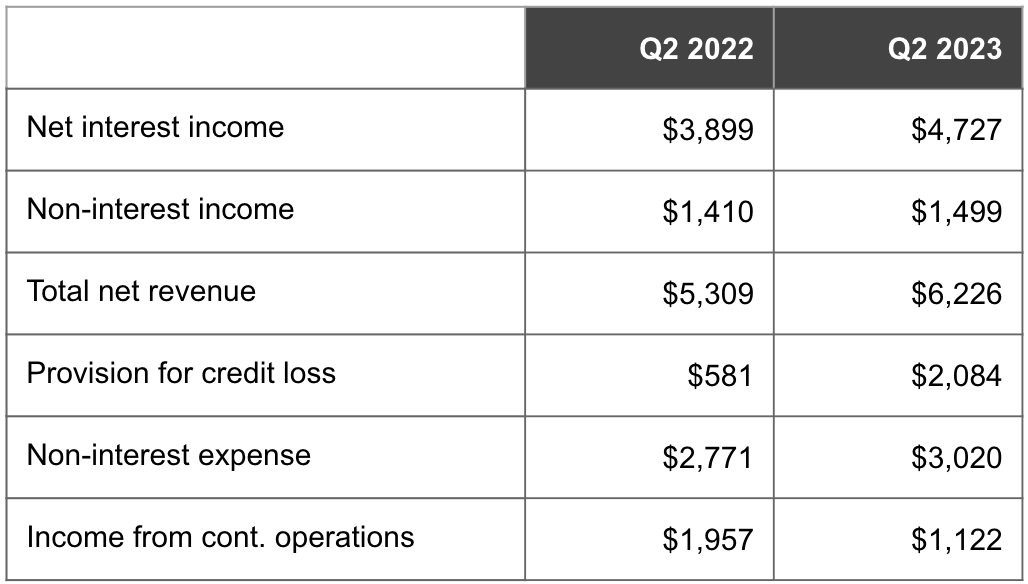Financial data is often where people go to glean hints about current and future economic conditions. Today we have a great example of that from Capital One ($COF).
The consumer banking and credit card giant filed its latest quarterly report at the end of July. The top line numbers look reasonable enough: interest income up 43 percent, net interest income up 9 percent.
Then we get to provisions for credit losses — which more than doubled, from $1.08 billion in the year-earlier period to $2.5 billion today. That drove a decline of 14.9 percent in net interest income after credit losses (kinda sorta the banking equivalent of operating income), and down at the bottom line we see a decline of 29.5 percent in net income.
OK, clearly something not good is going on, and it’s somewhere in Capital One’s disclosures about credit losses. Let’s start digging into the data.
Our first stop is Capital One’s footnote disclosure about allowances for credit losses. There, the bank reports charge-offs (that is, debt deemed unrecoverable) across various divisions. See Figure 1, below.

Look at the charge-offs for Capital One’s credit card division: $1.87 billion. That’s up roughly 80 percent from $1.01 billion in the year-earlier period.
We can also look at net charge-offs, which are even worse. Net charge-offs for the credit card division one year ago were $678 million; today, as we can see in Figure 1, they’re at $1.53 billion. Net charge-offs across the entire bank went from $845 million to $2.18 billion.
So Capital One customers are falling behind on their credit card payments. Next question: how significant is that phenomenon to Capital One’s overall business?
To find that answer, we need to crack open Capital One’s segment disclosure.
Once there, we find that the credit card division had $4.73 billion in net interest income this quarter, up 21.2 percent from $3.9 billion one year ago. Capital One also had $7.11 billion in net interest income this quarter, which means the credit card business accounts for a lot (66.5 percent) of Capital One’s overall net interest income.
But that spike in provisions for credit losses ruins everything! One year ago, Capital One’s credit card business had $3.9 billion in net interest income, offset by only $589 million in credit loss provisions. Pretax income from continuing operations was $1.96 billion.
Now Capital One is seeing more net interest income, thanks to consumers racking up credit card debt (we all saw that story the other day about credit card debit surpassing $1 trillion for the first time ever, right?) and Capital One charging higher interest rates — but provisions for credit losses grew even faster. So pretax income from continuing operations plunged this quarter to $1.12 billion. See the table below for a comparison.

Simply put, consumers are now neck-deep in credit card debt. A greater portion of them are falling behind on payments, which is not good for a large credit card company such as Capital One. Its charge-offs are rising faster than the debt payments consumers are making. When your credit card business is such a significant part of overall operations, that’s a big deal.
How big a deal? Calcbench isn’t necessarily sure — but we do have all the data you need to answer that question yourself.